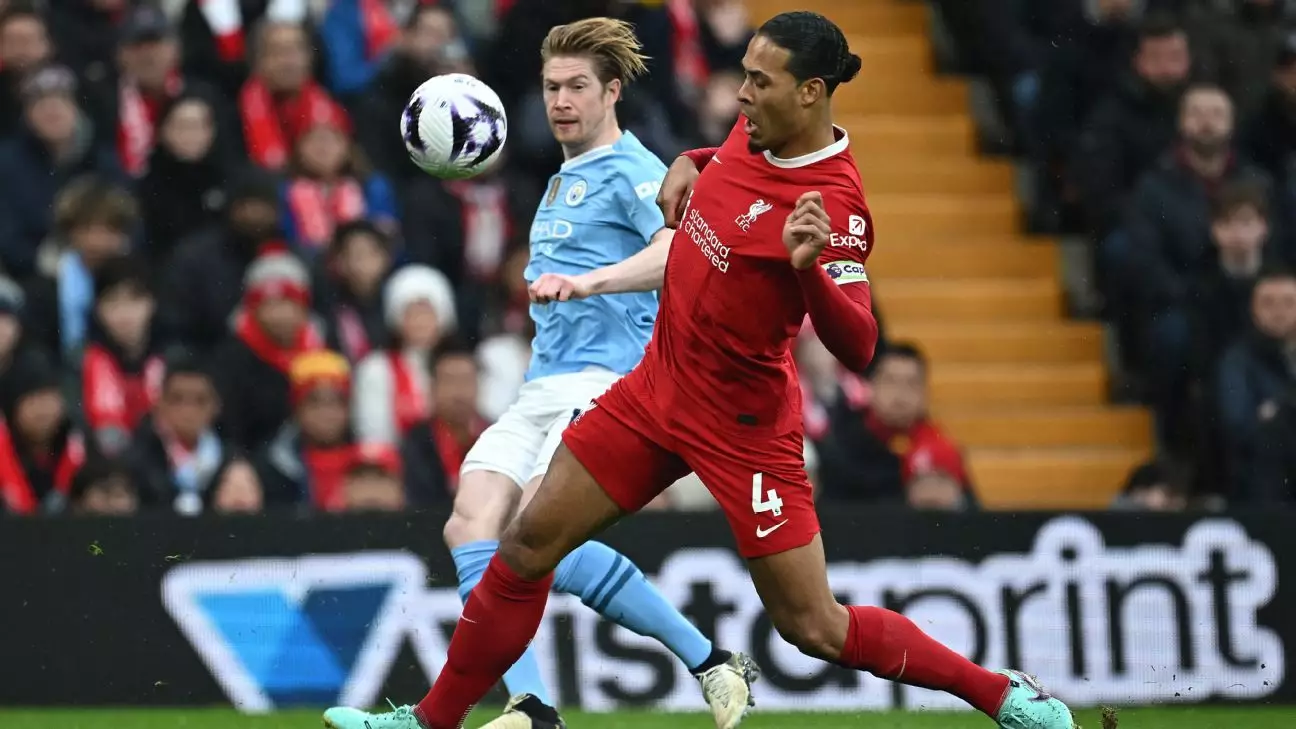The Premier League is a stage where talent flourishes, and superstars like Mohamed Salah, Virgil van Dijk, and Kevin De Bruyne have become household names. Each of these players has not only etched their names in the annals of club history but has also played pivotal roles in securing major trophies for their respective teams. However, all three find themselves at a crucial juncture: the final stretch of their contracts, and a glimmer of uncertainty lingers as they enter their 30s.
As the season unfolds, the contracts of several high-profile athletes wind down, leaving clubs grappling with critical decisions. Mohamed Salah (32) and Virgil van Dijk (33) have yet to negotiate extensions with Liverpool, while Kevin De Bruyne (33) at Manchester City is in a similar predicament, facing questions about his future after this summer’s FIFA Club World Cup. Also on this precarious path is Son Heung-Min (32), whose tenure at Tottenham Hotspur is uncertain. This situation reflects a broader trend in the Premier League: as top clubs rebuild their squads, they are faced with the dilemma of whether to retain aging stars or seek rejuvenation through fresh talent.
One of the pivotal challenges confronting clubs is the question of performance longevity. High-profile players must demonstrate they can sustain their production, not just in the present moment but two years down the line. How valuable will a player like Salah or De Bruyne be when they reach 35? Contract negotiations are influenced not merely by current form but by predictive analytics regarding players’ future contributions.
A former sporting director shed light on the complexities of contract decisions in the Premier League, highlighting that various factors come into play beyond mere statistics. The depth of the squad, market availability for reliable replacements, and the financial implications of maintaining a high-earning player are all critical considerations. A trend has emerged where clubs rely heavily on data analytics to project a player’s performance trajectory, including their training habits and injury histories. Engaging with data is more crucial than ever, as it can serve as a key indicator of a player’s future contributions.
For talented athletes like Salah, Van Dijk, and De Bruyne, each case diverges in terms of fitness and on-field performance. Salah, despite his previous muscle injuries, continues to disrupt defenses, making him a key asset for Liverpool. His combination of skill, speed, and goal-scoring prowess has bolstered the club’s title aspirations. On the other hand, Van Dijk has shown remarkable resilience since his serious injury in 2020, displaying solid performance metrics that suggest a decline is not imminent.
Conversely, though De Bruyne is a cornerstone of Manchester City’s success, his recent injury record raises alarms. Missing numerous games due to hamstring issues potentially positions him as someone to be carefully considered in the upcoming contract discussions. As clubs prepare for the future, the decision on whether to renew his contract could rely heavily on fitness projections and the state of his body as he ages.
The importance of timing cannot be underestimated in the world of football transfers. The decision to let players go or retain them can shape a club’s fortunes significantly. Recent high-profile departures have proven that some clubs are becoming more strategic and proactive about contract renewals. Manchester United’s choice to part ways with Raphaël Varane and Manchester City’s decision to release Ilkay Gündogan both illustrate a trend toward discarding aging players before they become less effective liabilities.
Yet, the situation is not black and white; clubs must balance ambition with pragmatism. Major stars cannot expect to find lucrative contracts in other leagues, leading to scenarios where players may opt for reduced salaries to maintain their lifestyle. This reality often facilitates negotiations where an aging star and the club could find mutually agreeable terms without being overly punitive toward either party.
As we navigate the landscape of Premier League football, the decisions facing clubs like Liverpool and Manchester City are legion. The balance between valuing past contributions and prognosticating future performance presents a unique challenge. Salah, Van Dijk, and De Bruyne are not just players; they embody a club’s ambition and legacy. Whether clubs opt to trust their aging stars to sustain high performance or choose to cut ties and invest in youth, it is a decision that could reverberate throughout the entire squad.
Ultimately, the analysis of performance data coupled with a clear-eyed assessment of market conditions will lead to decisions that are as much about business strategy as they are about sporting merit. In their prime, the stars provided magic on the pitch; now, as they face their twilight years, the crux of their careers lies in the hands of their clubs — a significant crossroads indeed.
